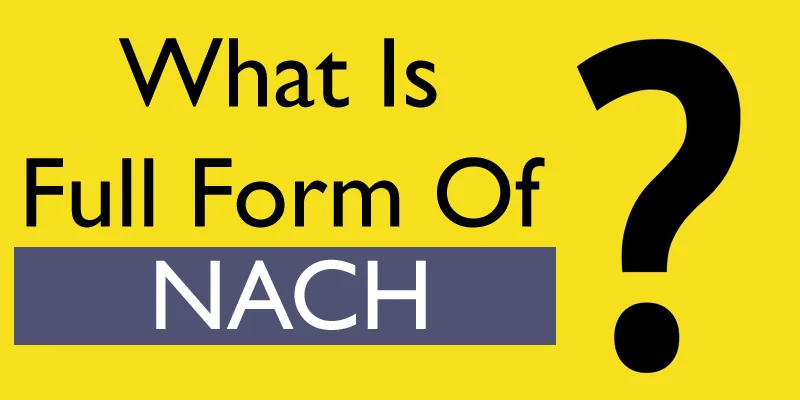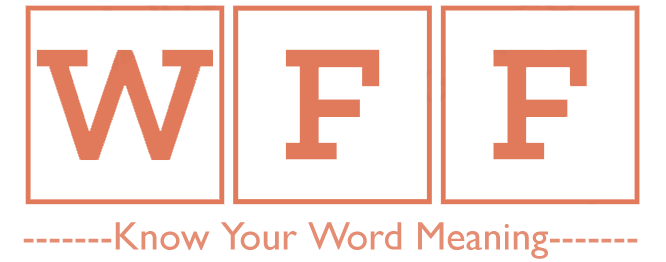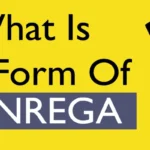Do you know what is the NACH Full Form? The full form of NACH is the National Automated Clearing House. It is an electronic payment system that allows the seamless transfer of funds from one bank account to another. NACH has become an essential tool for individuals and businesses alike to automate recurring payments like loan repayments, utility bill payments, investments and SIPs.
Table Of Content
What is the NACH Full Form?
NACH Full Form – National Automated Clearing House
What is NACH?
NACH stands for National Automated Clearing House. It is an electronic payment system that facilitates interbank, high-volume and repetitive transactions processed on a one-to-many basis. In simple words, NACH is a platform through which banks can handle large volumes of transactions, making it a cost-effective solution for both the bank and the customer.
History of NACH
NACH was launched in 2008 by the National Payments Corporation of India (NPCI). Initially, it was intended to replace the ECS (Electronic Clearing Service) system, which was being used to facilitate wholesale transactions. Eventually, NACH became the preferred system for banks to process large volumes of transactions on a repetitive basis, making it easier for customers to pay bills, and make loan EMIs and other recurring payments.
How does NACH work in banking transactions?
NACH Payment Process
The NACH payment process involves the use of a mandatory form authorizing the bank to debit funds from the customer’s account on a specified date. The mandate can be used for recurring payments such as loan EMIs, utility bills, insurance premiums and other payments. These transactions are processed in batches in a secure and automated manner.
Steps included in the NACH Process
- To avail of the NACH service, sign an online mandate and fill up the required details.
- The mandate should mention the periodicity and amount of the debit.
- Providing a mobile number and email ID is optional.
- The signature and name on the NACH mandate should match bank records.
- Once submitted, debits will happen automatically on due dates.
- Ensure sufficient balance in the account to honour the debits on due dates.
Difference between NACH and ECS?
Both ECS and NACH are electronic clearing systems, but NACH is an advanced version of ECS. NACH is a more advanced system which provides more features like the ability to process transactions on a real-time basis. The following table explains the major difference between NACH:
| Category | NACH | ECS |
| Process | Well-defined and streamlined | Manual |
| Paperwork | Less | More |
| Rejection ratio | Lower | Higher |
| Registration | 15 days | 30 days |
| Payment settling | Same day | 3-4 days |
| Unique MRR number | Provided | Not provided |
Features of using NACH
The following are the features of the NACH facility:
- NACH is an automated payment system for regular payments.
- It saves time and eliminates the need for customers to visit the bank for payments.
- The process is automated, reducing the chances of errors.
- Payments happen automatically on the stipulated date without delay.
- NACH eliminates the hassle of remembering payment due dates.
- There are no missed EMIs or delayed payments of utility bills.
- NACH mandate can be submitted online, without any paperwork.
- Transactions done through NACH are safe and secure.
Type of NACH
NACH facilitates both debit and credit transactions.
- Debit transactions involve periodical payments such as utility bills, EMIs, insurance premiums, and credit card dues.
- Credit transactions enable businesses to make bulk payments directly to beneficiaries’ bank accounts.
NACH Mandate registration can be tracked online with the provided reference number. The credit process helps corporate and organizations pay salaries to many employees at once.
NACH vs NEFT vs RTGS
NEFT (National Electronic Funds Transfer) and RTGS (Real-Time Gross Settlement) are also electronic payment systems in India. NEFT is used for low-value transactions, while RTGS is used for high-value transactions. On the other hand, NACH is used for bulk transactions, making it an ideal solution for recurring payments.
Types of Transactions Supported by NACH
Utility bill payment: NACH supports the payment of utility bills such as electricity, water and gas bills. The system enables customers to automate the payment of their bills and avoid late payment fees.
Debt repayment: NACH is widely used for loan repayment, making it easier for customers to repay their loans on time. The system enables the automatic deduction of the loan amount from customer accounts ensuring timely repayment.
Investment and SIP: NACH is also used for investment and Systematic Investment Plans (SIP). It enables investors to make regular contributions to their investment accounts, ensuring that they meet their investment goals.

FAQs- What Is The NACH Full Form?
What is the NACH Full Form?
The NACH Full Form stands for National Automated Clearing House.
What is NACH used for?
NACH is a payment system used for the automated processing of bulk transactions for various types of payments, such as utility bills, loan EMIs, insurance premiums, mutual fund investments, salaries, pensions, and dividend warrants.
How does NACH work?
NACH works by collecting mandates from customers to debit their accounts for a specific amount and at certain intervals. The mandates are then forwarded to the National Payment Corporation of India (NPCI), which processes the transactions and forwards them to the customers’ banks for approval. The corporate can collect funds from the customers’ accounts once the transactions are approved.
What are the features of NACH?
The features of NACH include faster processing time, no manual intervention, the minimal scope for errors, automatic debit of accounts, timely payment of bills/EMIs, easy submission of mandates online, safe transactions, and the ability to make both credit and debit transactions.
What are the Different Types of NACH?
NACH allows for both debit and credit transactions. The debit process is used for periodical payments, such as utility bills, loan EMIs, insurance premiums, etc. The credit process is used for bulk payments directly into beneficiaries’ bank accounts, such as employee salaries.
Thanks for reading What is the NACH Full Form? Bookmark our website Whatisfullform.com to know or read our collection of full forms.


